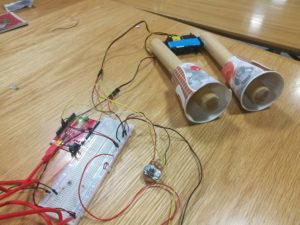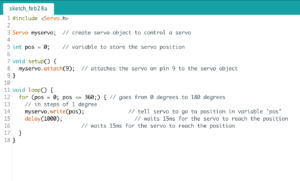I personally really enjoyed reading this article. Though I haven’t made many projects yet, one thing that I realised is that when you ask others to interact or play with your project, something unexpected always happens. For my plant pot project, for example, I originally wanted the plant pot to “smile” when someone talked to it. Adham and Mateo then come along and start swearing at it, should it then be smiling? I then changed the smile to a shocked expression instead because 1) plants would be surprised you’re talking to it 2) it won’t react differently to normal talk and swearing.
One thing Aaron mentioned, which although is different but relates to the article, is the idea of user testing (which is essentially what is described). What I think the article emphasises is the need for user testing to build your project to a certain level of “fixed” rules/expectations and then let whoever is trying out the project experience the rest. I think that it is through this project experience where the person experimenting would evoke the most emotions and thus the person who built it gain the most “satisfaction” out of the making of the project.




